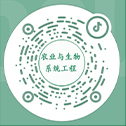| [1] |
国家统计局. 2019中国统计年鉴[M]. 北京:中国统计出版社,2019.
|
| [2] |
Lecun Y, Bengio Y, Hinton G E, et al. Deep learning[J]. Nature, 2015, 521(7553): 436-444.
|
| [3] |
Krizhevsky A, Sutskever I, Hinton G E. ImageNet classification with deep convolutional neural networks[C]//Proceedings of the 25th International Conference on Neural Information Processing Systems, Siem Reap, Cambodia, 2012: 1097-1105.
|
| [4] |
Rawat W, Wang Zenghui. Deep convolutional neural networks for image classification: A comprehensive review[J]. Neural Computation, 2017, 29(9): 2352-2449.
|
| [5] |
Szegedy C, Liu Wei, Jia Yangqing, et al. Going deeper with convolutions[C]//2015 IEEE Conference on Computer Vision and Pattern Recognition (CVPR), 2015, 10(1): 1-9.
|
| [6] |
He Kaiming, Zhang Xiangyu, Ren Shaoqing, et al. Spatial pyramid pooling in deep convolutional networks for visual recognition[C]//IEEE Transactions on Pattern Analysis and Machine Intelligence, 2014, 37(9): 1904-1916.
|
| [7] |
Mohanty S P, Hughes D P, Salathe M, et al. Using deep learning for image-Based plant disease detection[J]. Frontiers in Plant Science, 2016, 7: 1419-1419.
|
| [8] |
Ferentinos K. Deep learning models for plant disease detection and diagnosis[J]. Computers and Electronics in Agriculture, 2018, 145: 311-318.
|
| [9] |
Grinblat G L, Uzal L C, Larese M G, et al. Deep learning for plant identification using vein morphological patterns[J]. Computers and Electronics in Agriculture, 2016, 127: 418-424.
|
| [10] |
Ngugi L C, Abelwahab M, Abo-Zahhad M. Recent advances in image processing techniques for automated leaf pest and disease recognition: A review[J/OL]. Information Processing in Agriculture, 2020, [2020-04-21], https: //doi. org/10. 1016/j. inpa.
|
| [11] |
张善文,谢泽奇,张晴晴. 卷积神经网络在黄瓜叶部病害识别中的应用[J]. 江苏农业学报,2018,34(1):62-67.Zhang Shanwen, Xie Zeqi, Zhang Qingqing. Application research on convolutional neural network for cucumber leaf disease recognition[J]. Jiangsu Journal of Agricultural Sciences, 2018, 34(1): 62-67. (in Chinese with English abstract)
|
| [12] |
马浚诚,杜克明,郑飞翔,等. 基于卷积神经网络的温室黄瓜病害识别系统[J]. 农业工程学报,2018,34(12):186-192.Ma Juncheng, Du Keming, Zheng Feixiang, et al. Disease recognition system for greenhouse cucumbers based on deep convolutional neural network[J]. Transactions of the Chinese Society of Agricultural Engineering (Transactions of the CSAE), 2018, 34(12): 186-192. (in Chinese with English abstract)
|
| [13] |
王艳玲,张宏立,刘庆飞,等. 基于迁移学习的番茄叶片病害图像分类[J]. 中国农业大学学报,2019,24(6):124-130.Wang Yanling, Zhang Hongli, Liu Qingfei, et al. Image classification of tomato leaf diseases based on transfer learning[J]. Journal of China Agricultural University, 2019, 24(6): 124-130. (in Chinese with English abstract)
|
| [14] |
李淼,王敬贤,李华龙,等. 基于CNN和迁移学习的农作物病害识别方法研究[J]. 智慧农业,2019,1(3):46-55.Li Miao, Wang Jingxian, Li Huarong, et al. Method for identifying crop disease based on CNN and transfer learning[J]. Smart Agriculture, 2019, 1(3): 46-55. (in Chinese with English abstract)
|
| [15] |
郭小清,范涛杰,舒欣. 基于改进Multi-scale AlexNet的番茄叶部病害图像识别[J]. 农业工程学报,2019,35(13):162-169.Guo Xiaoqing, Fan Taojie, Shu Xin. Tomato leaf diseases recognition based on improved Multi-scale AlexNet[J]. Transactions of the Chinese Society of Agricultural Engineering (Transactions of the CSAE), 2019, 35(13): 162-169. (in Chinese with English abstract)
|
| [16] |
吴华瑞. 基于深度残差网络的番茄叶片病害识别方法[J]. 智慧农业,2019,1(4):42-49.Wu Huarui. Method of tomato leaf diseases recognition method based on deep residual network[J]. Smart Agriculture, 2019, 1(4): 42-49. (in Chinese with English abstract)
|
| [17] |
胡志伟,杨华,黄济民,等. 基于注意力残差机制的细粒度番茄病害识别[J]. 华南农业大学报,2019,40(6):124-132.Hu Zhiwei, Yang Hua, Huang Jiming, et al. Fine-grained tomato disease recognition based on attention residual mechanism[J]. Journal of South China. 2019, 40(6): 124-132. (in Chinese with English abstract)
|
| [18] |
曾伟辉. 面向农作物叶片病害鲁棒性识别的深度卷积神经网络研究[D]. 合肥:中国科学技术大学,2018.Zeng Weihui. Research on Robust Recognition of Crop Leaf Diseases based on Deep Convolution Neural Network[D]. Hefei: University of Science and Technology of China, 2018. (in Chinese with English abstract)
|
| [19] |
Too E C, Yujian L, Njuki S, et al. A comparative study of fine-tuning deep learning models for plant disease identification[J]. Computers and Electronics in Agriculture, 2019, 161: 272-279.
|
| [20] |
刘洋,冯全,王书志. 基于轻量级CNN的植物病害识别方法及移动端应用[J]. 农业工程学报,2019,35(17):194-204.Liu Yang, Feng Quan, Wang Shuzhi. Plant disease identification method based on lightweight CNN and mobile application[J]. Transactions of the Chinese Society of Agricultural Engineering (Transactions of the CSAE), 2019, 35(17): 194-204. (in Chinese with English abstract)
|
| [21] |
雷杰,高鑫,宋杰,等. 深度网络模型压缩综述[J]. 软件学报,2018,29(2):251-266.Lei Jie, Gao Xin, Song Jie, et al. Survey of deep neural network model compression[J]. Journal of Software, 2018, 29(2): 251-266. (in Chinese with English abstract)
|
| [22] |
李江昀,赵义凯,薛卓尔,等. 深度神经网络模型压缩综述[J]. 工程科学学报,2019,41(10):1229-1239.Li Jiangyun, Zhao Yikai, Xue Zhuoer, et al. A survey of model compression for deep neural networks[J]. Chinese Journal of Engineering, 2019, 41(10): 1229-1239. (in Chinese with English abstract)
|




 下载:
下载:





